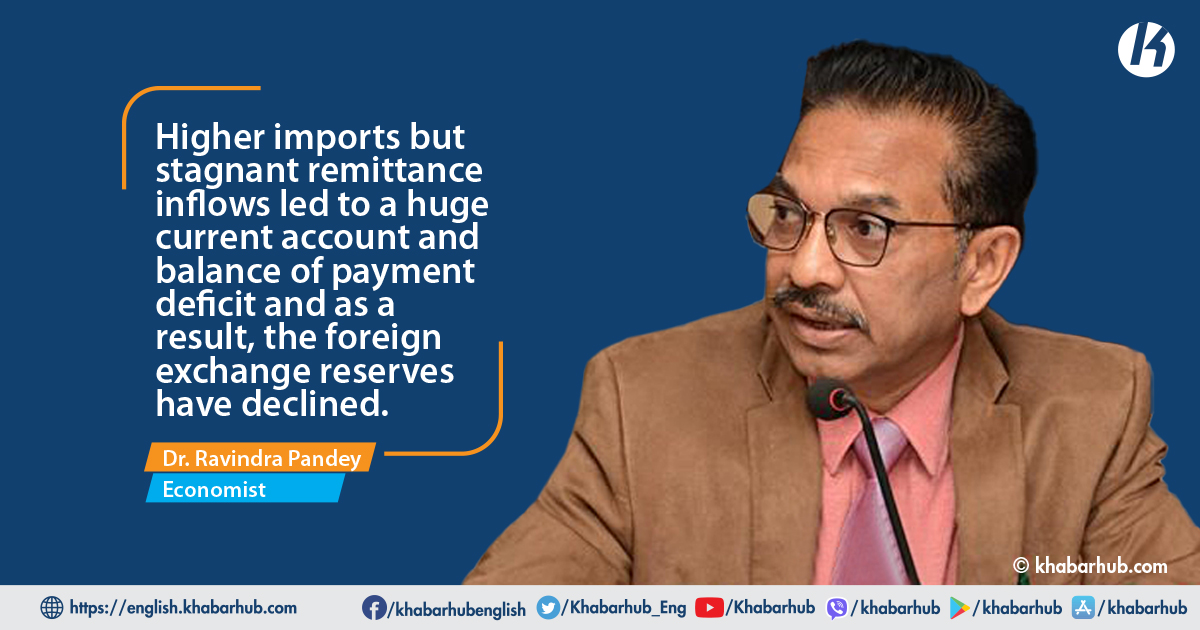0%

The present-day concern in the market and the talk of the town these days has been the shortage of liquidity in the Nepalese economy.
The current economic issues as envisioned in the market are as follows and if the concerned authorities are a bit late in combating them, the situation may reach a depth from where it will be very difficult to climb up.
More specifically, liquidity shortage in the banking system coupled with the increase in the interest rates is mainly due to the higher rate of credit flows than deposit mobilization.
As a result, the short-term interest rate reached about 7% and the weighted average lending rate has risen to above 10% as of Magh 2078.
As a result, banks are unable to maintain CRR and for which they are using SLF.
Higher imports but stagnant remittance inflows led to a huge current account and balance of payment deficit and as a result, the foreign exchange reserves have declined.
However the approval of about US$ 395.9 million, a 38-month financing package as an extended credit facility of IMF of which the disbursement of the first installment of US$ 110.42 million will help mitigate the negative impact on foreign exchange reserve.
BoP deficit of Rs 247 billion has been recorded as of Magh 2078, whereby foreign currency reserves have declined to US$ 9.7 million which can cover only 6.7 months of imports of merchandise goods and services.
Thus the continuous rise in imports has posed a threat to external sector stability.
During the same period last year, the forex reserves were sufficient to cover imports of merchandise goods and services for 12 months.
Another point to note is Rs 18.5 billion (185 Arba) has already been used for the imports of petroleum products in the first 8 months of the current fiscal year as against the use of Rs 17.6 billion (176 Arba) in the entire year, last year.
Likewise, during the first eight months of this fiscal year, Rs 3.268 billion (32 Arba 68 crore) has already been used in the import of goods as against Rs 2.75 billion (27 Arba 50 crore) in 12 months of last year.
Higher credit has been used to finance imports, causing liquidity shortage and balance of payment deficit simultaneously and if not contained in time, the current external sector problem can translate into the banking sector and to the overall economic sector.
The present situation is caused by higher imports as well as higher credit flows.
However the approval of about US$ 395.9 million, a 38-month financing package as an extended credit facility of IMF of which the disbursement of the first installment of US$ 110.42 million will help mitigate the negative impact on foreign exchange reserve.
To combat the situation some short term means could be: